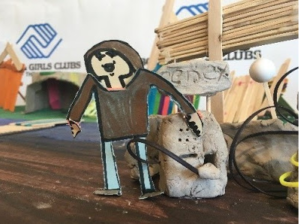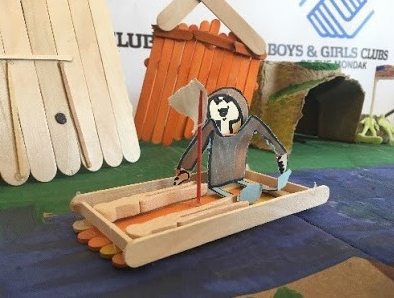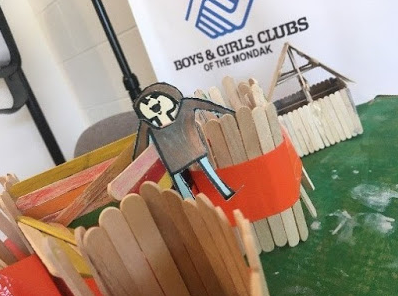IT TAKES A VILLAGE: THE DICHOTOMY BETWEEN AGENCY AND INSTRUCTION IT TAKES A VILLAGE: THE DICHOTOMY BETWEEN AGENCY AND INSTRUCTION BY CHANDLER PADGETT
 After years of waiting, the Boys & Girls Club of Richland County moved into its new building in March. Amid the pristine white walls, shiny steel kitchen, and ample programming space there sparkled a host of hopes and expectations for what we would accomplish free of our previous limitations. In May, the last month of school, I planned to channel these goals into my art program—to take full advantage of our new resources and involve our entire club community in a collaborative project.
After years of waiting, the Boys & Girls Club of Richland County moved into its new building in March. Amid the pristine white walls, shiny steel kitchen, and ample programming space there sparkled a host of hopes and expectations for what we would accomplish free of our previous limitations. In May, the last month of school, I planned to channel these goals into my art program—to take full advantage of our new resources and involve our entire club community in a collaborative project.
I decided the project would take the form of a village; in an attempt to engage the interests of as many members as possible and to encourage creativity, I didn’t set any stipulations on what was made—just that it had to fit on the allotted space.  The result was a middling motley of creations that varied greatly in effort, construction, and style: a Cenex station with no cars to fuel, a number of one-walled houses, and only one lonely person to enjoy it all.
The result was a middling motley of creations that varied greatly in effort, construction, and style: a Cenex station with no cars to fuel, a number of one-walled houses, and only one lonely person to enjoy it all.
I was a little disappointed in the end. Should I have been more structured and strict in my requirements? Would that have just made the kids lose interest in the project? I struggled to find a balance between agency and instruction; I didn’t want to dampen the students’ imagination and creativity, but I also wanted to give form, shape, and a definite lesson to the project. For example, though I tried to push kids to make more buildings and to put more effort into their creations, they often wanted to make a small animal sculpture or quickly move on to something new.
 Ultimately, around 20 members participated, which is about a third of our daily attendance. There were definitely bright moments of the collaboration and creativity I hoped to achieve: discussion about the layout and placement of the village, cooperation between grade levels on unique ideas. It’s hard to measure what the kids learned and how much fun they had doing so (which is more important than the end result), and I’m not entirely sure what I learned myself—maybe there’s some deeper lesson about community buy-in or the eventual futility of gasoline—but going forward into summer camps, I hope to educate in a way that’s both informative and fun.
Ultimately, around 20 members participated, which is about a third of our daily attendance. There were definitely bright moments of the collaboration and creativity I hoped to achieve: discussion about the layout and placement of the village, cooperation between grade levels on unique ideas. It’s hard to measure what the kids learned and how much fun they had doing so (which is more important than the end result), and I’m not entirely sure what I learned myself—maybe there’s some deeper lesson about community buy-in or the eventual futility of gasoline—but going forward into summer camps, I hope to educate in a way that’s both informative and fun.
 Blog
Blog 